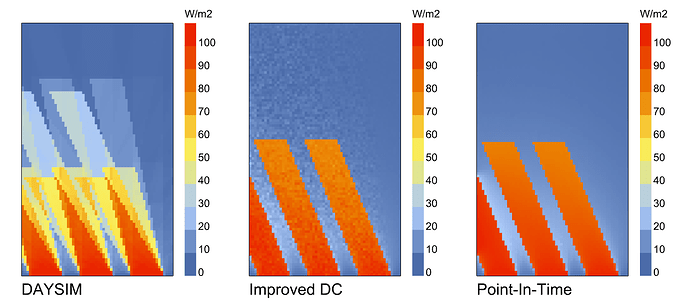Hi mates,
I use latest version of ladybug suite, I am trying to figure out how, and if, I can do the simulations to achieve daylighting credits in LEED, v4 o v4.1.
I found tutorials about sDA calculations but I couldn’t find tutorials to plot ASE as prescribed in LEED.
I would rellay appreciate if you could give me any support,tip, even indicate how to find info about that, I am on performance network but could’nt find any information on this topic.
Thanks in advance for your attention
Francesco
Hi there,
I would really appreciate if you could provide me any guidance, even link to paid courses or tutorials, if available, to run simulations for sDA and ASE for LEED.
Thanks for your assistance.
Hi @FrancescoEmanuele ,
We’ve purposefully hidden the ability to compute ASE precisely because the LEED Daylight option 1 credit is really complicated to compute (arguably needlessly complicated, though that’s a topic for another day).
Most platforms that claim to simulate the LEED daylight option 1 credit don’t really model the dynamic blinds or the direct sun correctly and the only one that I know of that actually does it all right is LightStanza. @mikkel recently added everything that’s needed in our core libraries to compute the LEED Option 1 credit correctly and I think he’ll be releasing a recipe that returns the LEED daylight credits to our Pollination Platform soon. So that’s going to be our ultimate answer here.
But I imagine that there’s also issues of enforcement on the end of USGBC since most LEED reviewers can’t tell from the submitted documents how accurately the direct sun was modeled. So it’s a bit of a mess at the moment, which I really hope they fix with the next version of LEED. For context, a lot of platforms will model the direct sun like the left-hand image, which we all know is not a good representation of direct sun:
And this obviously distorts the ASE calculation. Ladybug Tools annual simulations model the direct sun like the middle image. The right image is the most accurate (though it’s prohibitively time consuming to run an annual simulation like that). The main thing that Mikkel has been working on is generating the dynamic blind schedules from the direct sun and ASE, which are pretty much complete at this point. So we’re not far from having a public version of the recipe now.
All of this is to say that, if you want to be certain that you’ve met the LEED criteria, it might be wiser to use Option 2, or use Light Stanza, or wait a little bit longer for us to release the LEED Daylight Option 1 recipe on Pollination. I know LEED Daylight Option 2 really isn’t a great indicator of real annual daylight but at least the LEED language is really clear about it and there’s no ambiguity about whether you pass or fail.
I would like to thank you @chris for your reply and clear explanation of the issue.
Indeed I was thinking the same about the complication of the ASE and SDA and the difficulty to test it in a robust way, verifiable by a reviewer.
